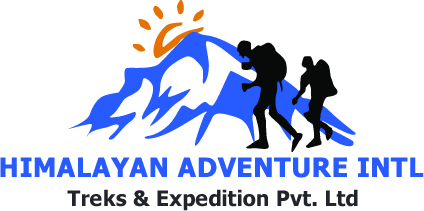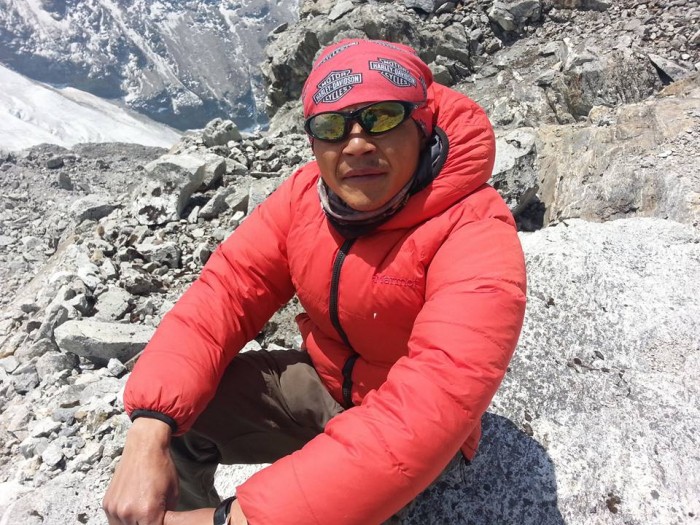The Makalu Sherpani Col Pass Trek offers an epic journey through the high Himalayas, crossing three major technical passes: Sherpani Col (6,135m), West Col (6,135m), and Amphu Labtsa (5,845m). This trek provides the rare opportunity to experience Makalu-Barun National Park, remote valleys, traditional Sherpa villages, high-altitude glaciers, and panoramic views of Everest, Lhotse, Baruntse, and Makalu.
It’s a once-in-a-lifetime experience for mountaineers, photographers, and experienced trekkers alike.
Highlights
-
Reach the stunning Makalu Base Camp (4,870m).
-
Cross three high-altitude mountain passes.
-
Explore remote regions of Makalu-Barun National Park.
-
Spectacular views of Everest, Lhotse, Baruntse, Makalu, and Chamlang.
-
Walkthrough unspoiled wilderness and isolated settlements.
-
Opportunity to combine with Mera Peak Climbing for added adventure.
Makalu Sherpani Col Pass Trek Elevation Overview
| Pass/Point |
Elevation (meters) |
| Makalu Base Camp |
4,870 m |
| Sherpani Col Pass |
6,135 m |
| West Col Pass |
6,135 m |
| Amphu Labtsa Pass |
5,845 m |
| Highest Camp |
5,700 m+ |
The Sherpani Col Pass Elevation and West Col Pass Elevation are identical, both requiring ropes and crampons due to technical icy terrain. The Amphulabtsa Elevation, though slightly lower, also involves abseiling and glacier crossing.
How Hard is the Sherpani Col Pass Trek?
If you're asking, “How hard is the Sherpani Col Pass trek?” — the answer is: Extremely challenging.
This is one of the most strenuous treks in Nepal. You’ll trek over 6000m passes, navigate glacial moraines, and camp in high-altitude snowfields. The trek requires:
-
High fitness level
-
Basic mountaineering skills
-
Experience with crampons, ice axes, and fixed ropes
It is not suitable for beginner trekkers.
What is the Cost of West Col Pass Trek?
For 2025/26, the cost of the West Col Pass Trek with Himalayan Adventure International Treks ranges from USD 4,200 to 5,000 per person. This includes:
This is a full expedition-style trek with everything organized for your safety and success.
How Much Does Makalu Base Camp Trek Cost?
For those just planning to reach Makalu Base Camp, the cost is significantly lower. The Makalu Base Camp Trek cost ranges between USD 1,800 to 2,400, depending on group size, services, and duration.
However, if you extend to Sherpani Col, West Col, and Amphu Labtsa, the cost increases due to technical logistics and higher-altitude camping.
How Many Days Does It Take for the Sherpani Col Pass Trek?
The Makalu Sherpani Col Pass Trek itinerary typically takes 25 to 30 days depending on acclimatization and side trips. Here’s a sample itinerary:
Makalu Sherpani Col Pass Trek Itinerary (30 Days)
Day 1: Arrival in Kathmandu
Day 2: Preparation day and permits
Day 3: Fly to Tumlingtar, drive to Num
Day 4-8: Trek to Makalu Base Camp via Seduwa, Tashi Gaon, Khongma Danda
Day 9-12: Acclimatization at Makalu Base Camp
Day 13: Trek to Hillary Base Camp
Day 14: Trek to High Camp
Day 15: Cross Sherpani Col (6,135m), camp in Baruntse glacier
Day 16: Cross West Col (6,135m), camp at Panch Pokhari
Day 17: Cross Amphu Labtsa Pass (5,845m), descend to Chhukung
Day 18-22: Trek to Lukla via Dingboche, Namche Bazaar
Day 23: Fly back to Kathmandu
Day 24-25: Contingency/reserve days
Day 26: Departure
A detailed Makalu Sherpani Col Pass trek map is provided by Himalayan Adventure Intl Trek upon booking. For online reference, search “Sherpani Col Pass Trek map” or “Makalu Sherpani Col (Three Col) Pass Trek map” on Google or Bing.
Combine with Mera Peak Climbing
Interested in peak climbing? You can combine the trek with Mera Peak Climbing (6,476m). The Makalu Sherpani Col Pass Trek with Mera Peak Climbing itinerary extends by 4–5 days, and costs an additional USD 900 to 1,200, depending on guide support and permits.
Makalu Sherpani Col Pass and Mera Peak Climbing Cost:
USD 4,900 – 5,500 (all-inclusive)
This combination is perfect for adventurers wanting to climb a peak while also trekking through the remote Sherpani and West Col routes.
Three Passes Trek Nepal vs. Makalu Sherpani Col Pass Trek
You might wonder how this compares to the popular Three Passes Trek Nepal itinerary (Renjo La, Cho La, Kongma La). While both treks cross high passes:
-
Everest 3 Passes Trek: Less technical, more teahouse-based, more crowded.
-
Makalu Three Col Pass Trek: Remote, more wild, technically demanding, fully camping-style.
So, if you’re looking for solitude and extreme adventure, Makalu Sherpani Col Pass Trek wins.
Best Time to Trek Makalu Sherpani Col Pass Trek
The best time to trek Makalu Sherpani Col Pass is:
-
Spring (April to early June): Best weather, stable snow conditions.
-
Autumn (Late September to mid-November): Clear skies, excellent visibility.
Avoid monsoon (June–August) and mid-winter (Dec–Feb) due to landslides and dangerous icy conditions.
Makalu Sherpani Col Pass Trek Distance
The total Makalu Sherpani Col Pass trek distance is approximately 180–200 km (112–125 miles) depending on the route taken and side treks. The route includes steep ascents, glacier crossings, and varied terrain.
AMS Sickness and Prevention
Altitude sickness is a real threat on this trek. Here's how to prevent AMS (Acute Mountain Sickness):
Symptoms of AMS:
-
Headache
-
Nausea
-
Loss of appetite
-
Fatigue
-
Dizziness
Prevention:
-
Slow ascent and proper acclimatization
-
Hydration and nutrition
-
Diamox (as prescribed)
-
Rest days at Makalu Base Camp and Hillary Base Camp
-
Emergency oxygen and satellite communication (provided by Himalayan Adventure International Treks)
Why Choose Himalayan Adventure International Treks?
Himalayan Adventure International Treks is a trusted Nepali trekking company with decades of experience in organizing remote and high-altitude expeditions. Here’s why they’re the best choice for your Makalu Sherpani Col Pass trek:
-
Expert Sherpa guides with mountaineering experience
-
High-quality gear and safety equipment
-
Customized itineraries with contingency plans
-
Small group-focused service
-
24/7 emergency support
-
Ethical treatment of porters and guides
Permits Required
You will need the following permits for this trek:
-
Makalu-Barun National Park Permit – NPR 3,000
-
TIMS Card – NPR 2,000
-
Climbing permit for Mera Peak (if combining)
-
Restricted Area Permit (for crossing passes) – Cost included in package
All permits are handled by Himalayan Adventure International Treks.
Equipment and Gear
Some key gear required includes:
-
Down jacket (-20°C rated)
-
Sleeping bag (-20°C)
-
Mountaineering boots
-
Ice axe, harness, helmet (provided for pass crossings)
-
Crampons
-
Headlamp
-
Trekking poles
-
Technical gloves
A detailed packing list is provided upon booking.
How to Book the Trek?
To book the Makalu Sherpani Col Pass Trek 2025/26, visit:
www.himalayanadventureintl.com
Email: info@himalayanadventureintl.com
WhatsApp/Viber: +977-9803526139
You can also find reviews and community insights on platforms like:
-
Makalu Sherpani Col Pass trek Reddit
-
Makalu Sherpani Col Pass trek Wikipedia
-
Makalu Sherpani Col Pass trek Google results
-
Makalu Sherpani Col Pass trek on Bing
The Makalu Sherpani Col Pass Trek is a truly extraordinary Himalayan expedition. It challenges your endurance, technical skills, and mental toughness — while rewarding you with surreal landscapes and unmatched adventure. If you're seeking a wild, remote, and unforgettable trek that few dare to undertake, this is it.
Let Himalayan Adventure International Treks be your trusted partner for this once-in-a-lifetime journey through Nepal's most remote mountain wilderness.

 Plan Your Trip Now
Plan Your Trip Now 


